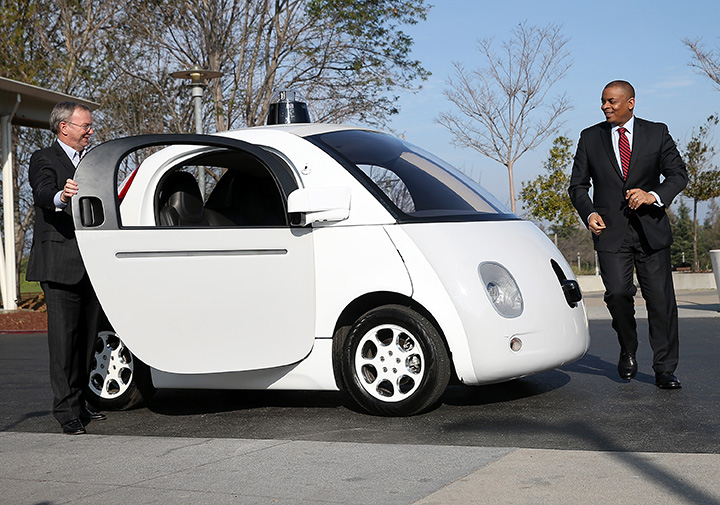
A personal visit to Silicon Valley by the U.S. Secretary of Transportation this week, followed by the release of a major annual report on the health of the region's economy provided hints of a future for the country's technology capital that will include huge transit challenges and optimism that the current tech boom is not another "bubble."
Secretary Anthony Foxx's visit to Google's headquarters in Mountain View, California coincided with his agency's release of "Beyond Traffic," billed as a 30-year outlook on the nation's transportation infrastructure. "Our country is facing significant headwinds when it comes to transportation," admitted Foxx.
Appearing before an audience of Google employees and media, Foxx was joined by Google chairman Eric Schmidt. The Cabinet official warned that the current political gridlock in Washington does not bode well for quick action to resolve crowded freeways or fund badly-needed public transit, and pointed out that Congress has passed 32 short-term extensions for funding his agency in the past six years. "This has really slowed down the planning process," said Foxx.
That's not necessarily the message that Silicon Valley officials and residents wanted to hear and both Foxx and Schmidt spoke openly about the need for the private sector to provide potential solutions. In keeping with this theme, the Transportation Secretary rode to the event on Google's campus in one of the search giant's prototype self-driving cars.
"Can you imagine the highway patrol pulling over the self-driving car?" Schmidt asked at one point. "That's really blowing my mind right now Eric," Foxx quickly replied.
According to Schmidt, Google now operates the largest private bus system in America. Their hired motor coaches, with comfortable seats and fully-equipped WiFi connections, transport thousands of employees on a daily basis between transit centers such as train stations, and to/from San Francisco. This presumably keeps an equivalent number out of their cars and off Silicon Valley highways.
Yet, a major annual report - The 2015 Silicon Valley Index - released this week by Joint Venture Silicon Valley, shows that commuting within the region has increased considerably, ranging from 23% to 33% over a two year period (2011 to 2013). The share of residents who use public transportation has gone up only two percentage points since 2003.
In releasing the report, Russell Hancock, president and CEO of Joint Venture Silicon Valley, expressed concern that the Valley's booming growth is being placed on top of a transportation grid that is fixed. "Silicon Valley will come to feel more and more like Manhattan," said Hancock.
Hancock's group has quantified Silicon Valley's growth each year since 1995. Its annual index measures economic factors such as job growth, income, and commercial land development, and weighs the potential impact on resources such as transportation and housing. The data is pulled form a wide range of sources, including Census reports and a multitude of state and federal databases.
Joint Venture's latest report confirms that Silicon Valley is booming, especially San Francisco which generated 18,000 new jobs alone. Overall, Silicon Valley added 58,000 new jobs, the highest growth rate since 2000.
"We're just growing like gangbusters," said Hancock. "Clearly, Silicon Valley continues to be driven by innovation."
This explosive growth has raised concerns that the tech industry is headed for another "bubble," similar to what happened in 2000 when a number of small technology companies collapsed during an economic recession. Hancock doesn't think that will happen this time.
"Our sense is that it's not a bubble," said Hancock. He points to factors such as the sustained economic growth over the past six years documented by his group's reports, and continued caution by venture capitalists in making technology-related investments as evidence.
"The hot economy is getting hotter," said Hancock. The concern now is whether, without the prospect of significant federal help, Silicon Valley's transportation system will soon experience its own meltdown.














